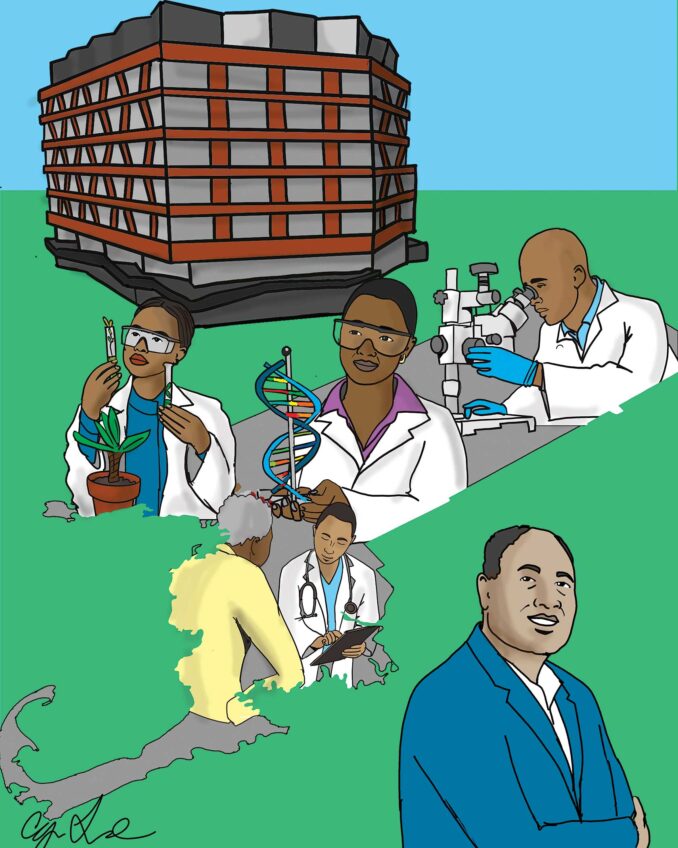At last: A law school to call our own
“Super Tuesday” was redefined on Feb. 2, 2010 when the Mass. Board of Higher Education unanimously voted to establish the first state law school.
When the vote was announced the room erupted with thunderous ovation, hands waving, clinched fists pumping the air and yes, tears. But a nagging question persists: why did it take so long?
After all, Massachusetts has always been at the forefront of public-supported education. It was the first state to legislatively accept the responsibility of educating its residents in 1647. It established the nation’s first public high school (Boston English, 1821); school for the blind (Perkins 1832); compulsory school attendance law (1852); training school for teachers (1839); and the first state school for the retarded (Walter Fernald School 1851).
In addition, Massachusetts established the country’s first major tax-supported free library (1854); and “formal” kindergarten (1856). And although it was the first state to judicially sanction racial segregation in its public schools (1848), it was also the first state to legislatively prohibit it (1855).
Given the state’s rich history of public education “firsts,” it’s a little surprising that Massachusetts is only the 45th state to have a state supported law school.
About 10 states have more than one state supported law school. California alone has five. Twenty-seven states had established state-supported law schools before the turn of the 20th century.
It is of note that nine of the 47 U.S. Supreme Court justices (who attended law school) earned their juris doctorates from state supported law schools.
One of the reasons for the delay in the vote was that a small trio of law schools claimed that they would be unable to compete with a low cost state school.
Another argument against a state school is that a surplus of lawyers already exists and the demand for legal services would decrease with the addition of another law school. In reality there are now 11 newly proposed law schools across the country in the queue, in as many states, awaiting ABA certification for 2010, 2011 and 2013.
According to “Expanding the Civil Right To Counsel,” a 2008 Boston Bar Association (BBA) study, 965,000 Massachusetts residents eligible for legal services were declined due to the lack of resources; and that more than 90 percent of the parties appearing on any given docket in Housing, Probate and Family Courts are unrepresented.
There is only one public service lawyer for every 3,550 low-income Massachusetts residents.
Moreover, blacks and hispanics only comprise 3.5 percent of the practicing lawyers in Massachusetts but constitute approximately 12.6 percent of the Massachusetts population.
For the last 10 years Southern New England Law School is the only one in the state — and the 5th in the country — that can boast that students of color comprise over a third of its student body.
The proposed law school is cost-effective. Under the revised proposal the Southern New England School of Law, which has $22 million in assets, will be donated to UMASS/Dartmouth. The school will neither seek nor require any new state appropriation.
Budget analysts estimate that the amount of this contribution “will grow to $1 million dollars annually” by 2015.
The new UMASS/Dartmouth Southern New England School of Law offers “a public law school option,” a unique program featuring public interest law that will match the types of legal services that are or will be in demand for select regions in the state.
It will offer “a law firm model” to replicate what lawyers do when the client first walks in the door; statutory courses such as bankruptcy, secured transactions, immigration law, commercial law, evidence and tax.
Finally, the proposal also requires six hours in a legal clinic coupled with a mandatory pro bono requirement for students to work 30 hours in an office delivering direct legal representation to clients.
The new law school will not be without its challenges.
During its first year it will be devoting many of its resources to assure that its library and facilities acquire accreditation by the American Bar Association.
Now that we have a law school to call our own its time for we, members of the Massachusetts Bar, to re-align ourselves with one of the Mass Bar Association’s stated purpose: “To serve the legal profession and the public by promoting … legal education, professional excellence, diversity and unity in the legal profession and respect for the law.”
It’s time for those law schools that stood in opposition and that have enjoyed the privileged license to educate and train lawyers of this state to subordinate their self-interests to embrace the state’s flagship to replicate the same.
Charles E. Walker Jr. is an adjunct professor at New England School of Law where he teaches “Race, Racism, and American Law.”






